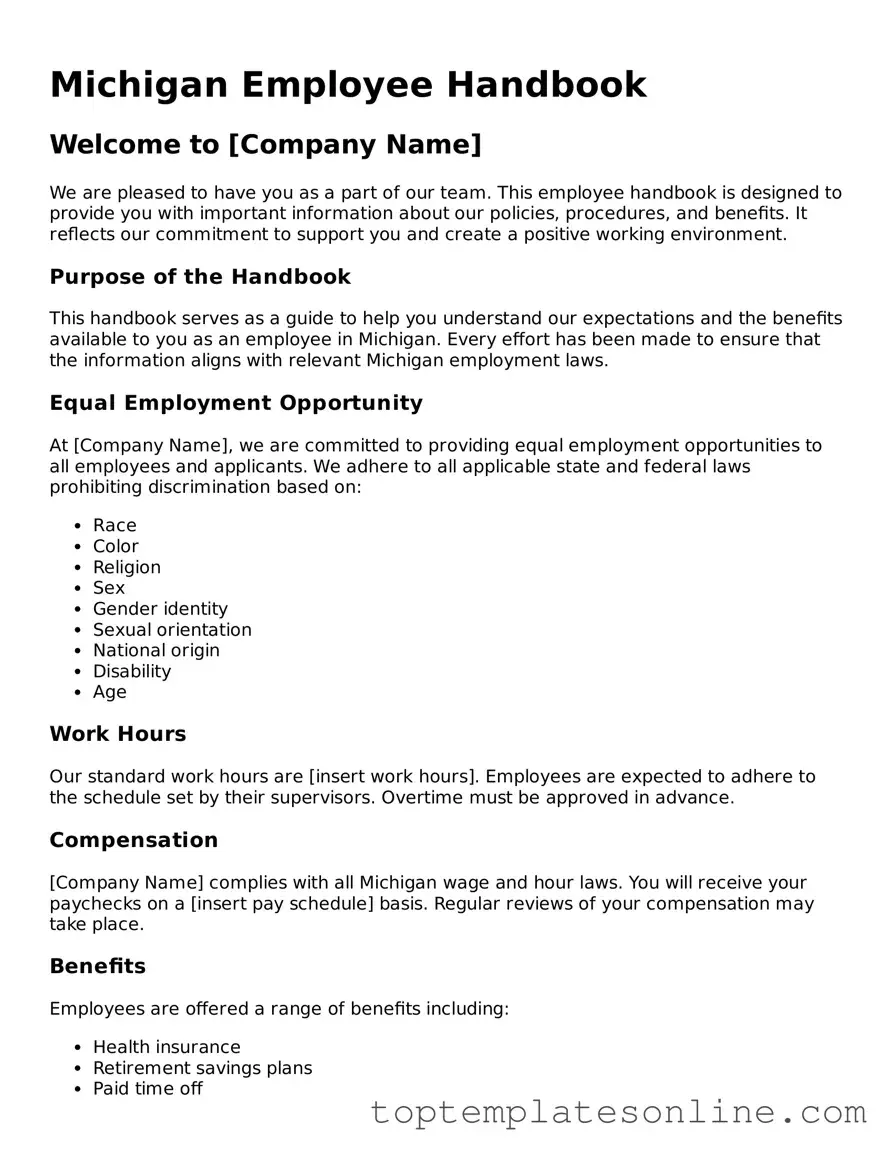Blank Employee Handbook Template for Michigan State
The Michigan Employee Handbook form serves as a vital document that outlines workplace policies, procedures, and employee rights within a company. This form not only helps to establish clear expectations but also fosters a positive work environment by promoting transparency. Understanding its components is essential for both employers and employees in Michigan.
Customize Employee Handbook Here
